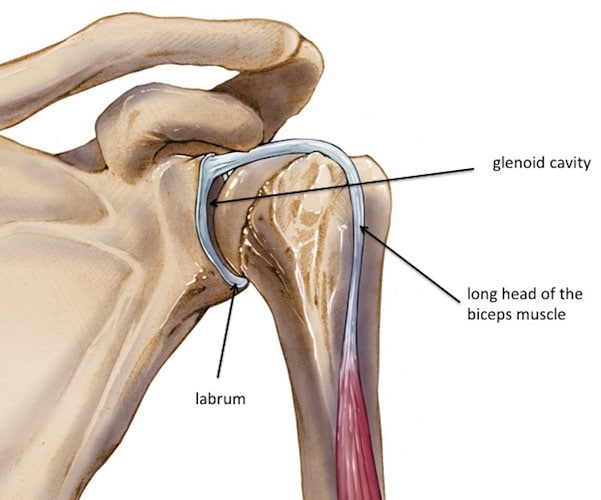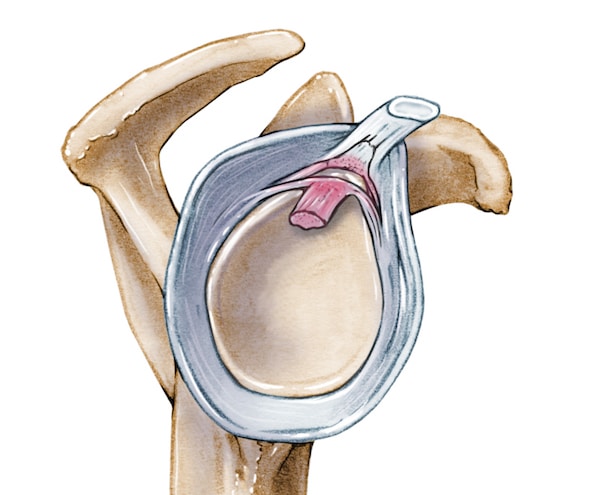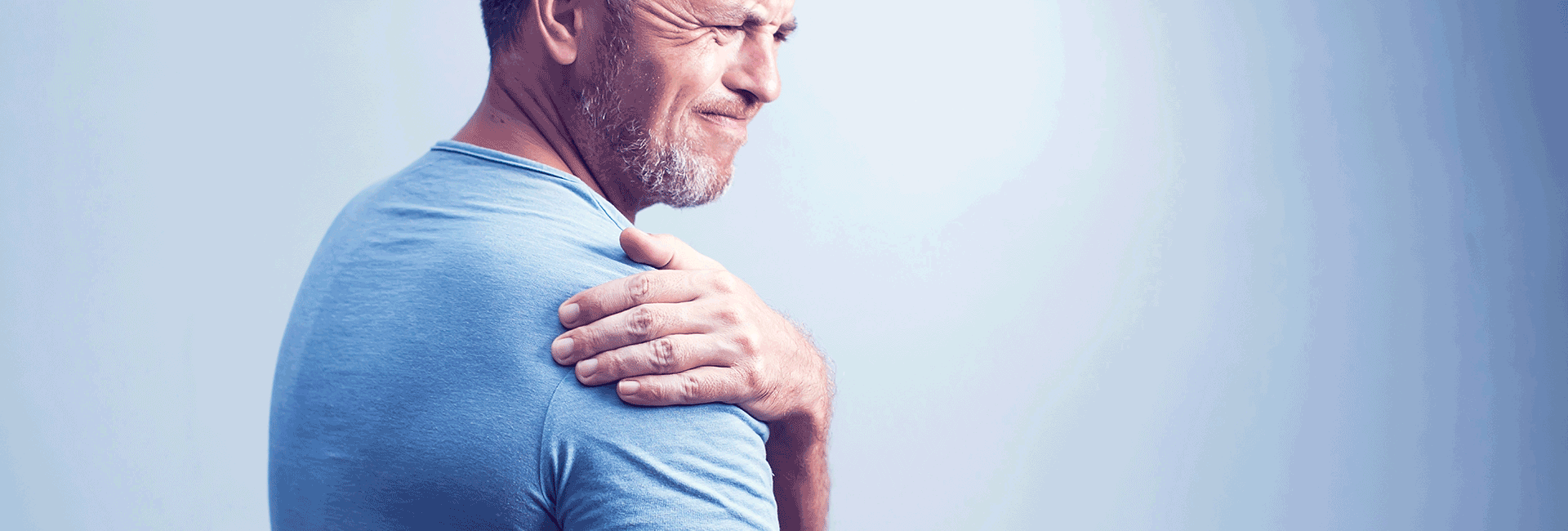Shoulder SLAP Tear
The shoulder is the most mobile joint in our body. This extra mobility comes at a cost, with decreased stability. Many structures play a role in stabilizing the shoulder, with the glenoid labrum being one of the main structural stabilizers. The labrum is a fibrocartilaginous ring situated on the ‘socket’ part of the shoulders ‘ball and socket joint’. It increases shoulder stability through increasing joint congruency and surface area, as well as creating a suction effect through a negative intra-articular pressure between the humeral head and glenoid fossa. A shoulder SLAP tear is an injury to this labrum, common in the middle to older population, and athletes.

A SLAP lesion stands for “Superior labrum anterior to posterior tear” which mean that the labrum has a tear from the top, near the bicep’s attachment extending from the front to back. Shoulder SLAP tears can result from trauma or repetitive stress on the shoulder, including:
Trauma to the shoulder that can cause a shoulder SLAP tear:
- Falling on an outstretched arm
- Shoulder dislocation
- Hyperextension with the arm above the head
Repetitive stress on the shoulder seen in:
- Athletes in throwing sports,
- Occupations that required repetitive overhead work
Patients will often present with clicking, popping or a catching sensation in the shoulder, a feeling of instability, decreased strength in affected shoulder and pain/inability to lie on shoulder. Labral tears can be diagnosed through physical examination, while MRI is considered the gold standard for diagnosis if results are supported clinically.

Treatment options for SLAP lesions
As with many most injuries, the treatment is largely dependent on the severity of the injury. Patients with low grade tears will opt for conservative management first, while higher grade tears generally require surgery. However, there are many factors that can influence this decision such as age, occupation and sporting level, to name a few.
Conservative management of shoulder SLAP tears may include:
- Education and relative rest to allow healing/reduction of inflammation in the acute phase.
- A short period using a sling.
- Manual therapy to improve pain free range of motion
- A personalized rehabilitation program
A well-structured rehabilitation program is essential to a proper management plan. Injuries to the labrum generally decrease the amount of structural stability in the should, so it is important to address the surrounding musculature to increase dynamic muscular stability. This is done through gradual and progressive loading of the muscles surrounding the shoulder joint.
Our chiropractors at Flex Health Professionals are well trained in preparing and progressing you through an appropriate exercise rehabilitation program tailored to your individual needs.

If you would like to learn more, visit our blog about different types of Shoulder pain .
If you have a suspected SLAP tear, book a chiropractic appointment with us for a comprehensive assessment and guided treatment plan.

